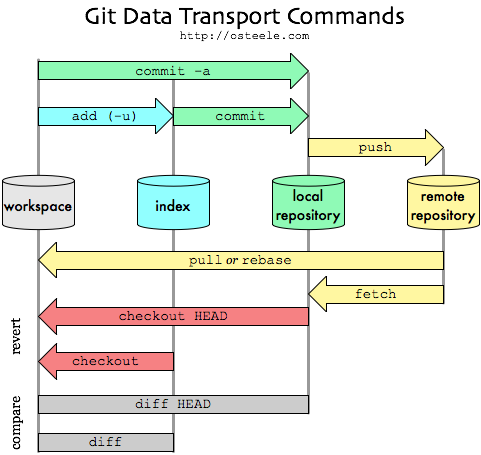
http://gitready.com/beginner/2009/01/21/pushing-and-pulling.html
Jeffrey Leek, Assistant Professor of Biostatistics
Johns Hopkins Bloomberg School of Public Health

http://gitready.com/beginner/2009/01/21/pushing-and-pulling.html
git add . adds all new filesgit add -u updates tracking for files that changed names or were deletedgit add -A does both of the previous git commit -m "message" where message is a useful description of what you didgit pushgit checkout -b branchnamegit branchgit checkout master